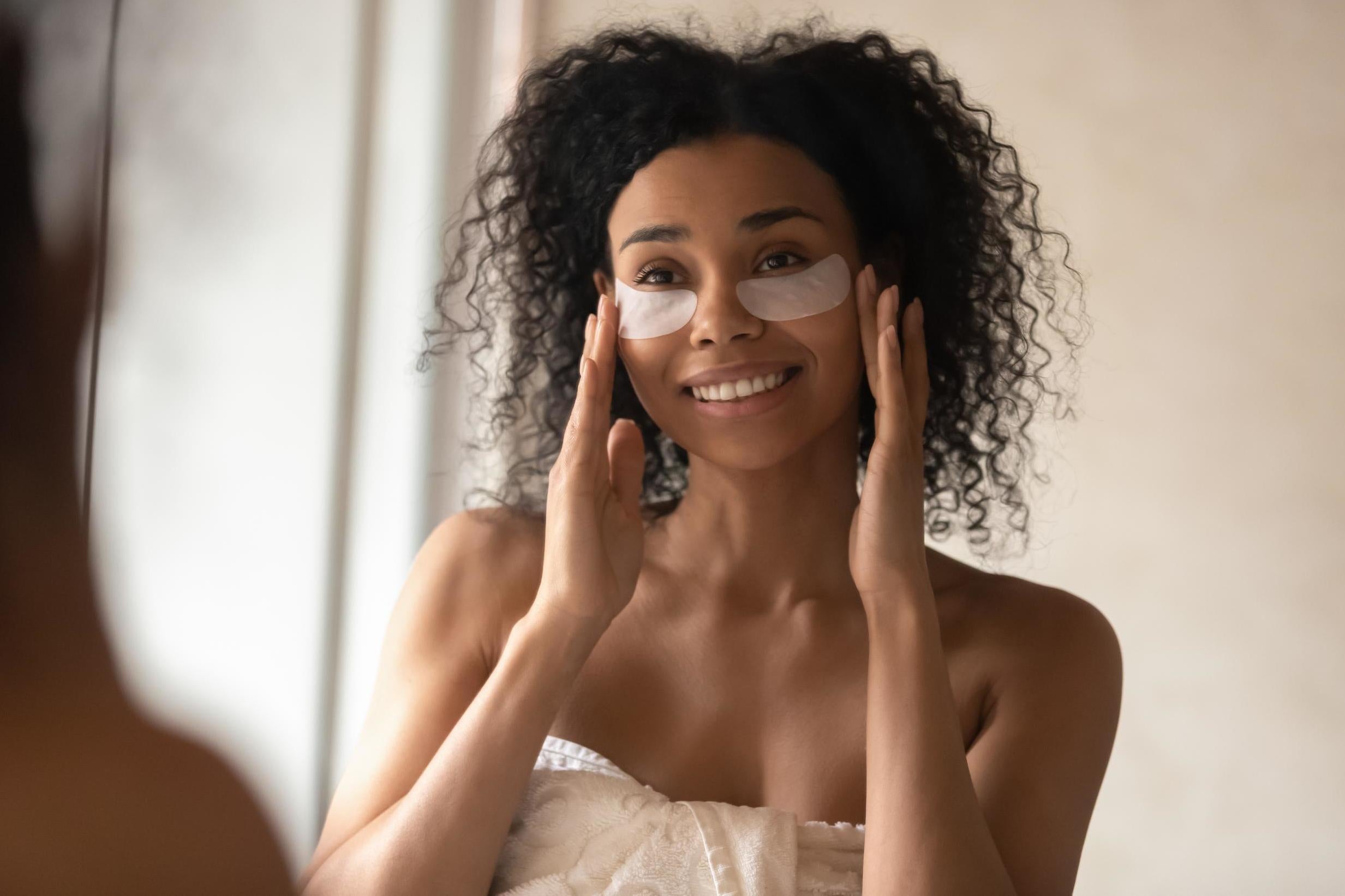The Independent's journalism is supported by our readers. When you purchase through links on our site, we may earn commission.
What causes under-eye bags and how can you reduce the appearance?
Ageing is one of the most common causes of under-eye puffiness

As we age, our skin does as well, meaning it is unavoidable that we will experience wrinkles, dark under-eye circles and skin pigmentation.
For the delicate skin around our eyes, changes such as the appearance of under-eye bags are especially noticeable.
But while ageing is one of the most common reasons for the look of swelling or puffiness under the eyes, getting older isn’t the only cause.
To find out what causes under-eye bags, and what we can do to improve their appearance, we spoke to dermatologists, who explained that food choices and genetics also play a part.
“Under-eye bags is a common term that is thrown around that describes a variety of complaints and woes in the lower eyelid region,” board-certified medical dermatologist and cosmetic surgeon Dr Melanie Palm explained. “True eyelid bags is puffiness in the under-eye region.”
According to Dr Palm, there are two different types of under-eye bags. Puffiness due to excess fat is called herniation of the infraorbital fat pads and requires surgical intervention, while under-eye bags due to swelling, known as edoema, can be fixed without a physician.
As for why under-eye bags occur, Dr Joshua Zeichner, board-certified dermatologist and director of Cosmetic and Clinical Research in Dermatology at Mount Sinai Hospital in New York City, told us: “With age, fat pads in the face re-distribute and droop. As this happens, the fat under the eye is no longer hidden, and becomes visible as the transition between the under eye area and the cheek elongates.”
According to Dr Zeichner, this change in appearance “may be the result of genetics, but can be made worse by fluid retention and ageing.”
“Eating salty foods means that your body may retain fluids, causing puffiness,” he added.
While it may not be possible to entirely diminish the appearance of under-eye bags, there are certain things you can do to help.
The first, according to Dr Zeichner, is to limit your intake of salty foods, which will result in less overall puffiness.
The second step, which dermatologists recommend year-round, is to apply sunscreen to your face daily to protect skin from UV light.
“UV light causes free radical damage that weakens skin collagen,” Dr Zeichner told us. “When the skin is weak, it cannot hold in [the fat] underneath, making it look more prominent.”
“Think of it as wearing a pair of stretched out Spanx that no longer do a good job at holding you in,” he added.
Previously, Dr Palm told us that sunscreen is the “most important skincare product” because, in addition to preventing oxidative damage to the skin, it can also prevent premature ageing and promote skin-ageing reversal.
Topical eye creams are also useful for reducing the appearance of under-eye bags, according to Dr Palm, as these products can “help reduce swelling and encourage healthy blood and lymphatic flow tremendously.”
The 10 Best eye creams
Show all 10Dr Zeichner recommends adding a retinol, “a form of vitamin A that stimulates collagen to strengthen the skin foundation,” to your skincare routine in the form of an eye cream.
According to Dr Zeichner, retinol products specifically made for under-eye use, such as Neutrogena Rapid Wrinkle Repair Eye Cream, which uses a “stabilised form of retinal that minimises skin irritation,” can reduce the appearance of bags.
Products that are formulated with caffeine are also useful in fighting under-eye bags because the ingredient “constricts blood vessels to remove excess fluid and may also help the body break down excess fat,” Dr Zeichner explains, adding that he recommends Kiehl's Eye Fuel.
While healthy foods, genetics and skincare are all key to keeping the under-eye area of your face free of puffiness, sleep is also important.
“The cheapest way to reduce the appearance of under-eye bags is to get on a regular sleep routine of seven to eight hours per day,” Annie Chiu, a dermatologist in North Redondo Beach, California, told Allure. “And don't drink alcohol a few hours before bedtime.”
Subscribe to Independent Premium to bookmark this article
Want to bookmark your favourite articles and stories to read or reference later? Start your Independent Premium subscription today.

Join our commenting forum
Join thought-provoking conversations, follow other Independent readers and see their replies